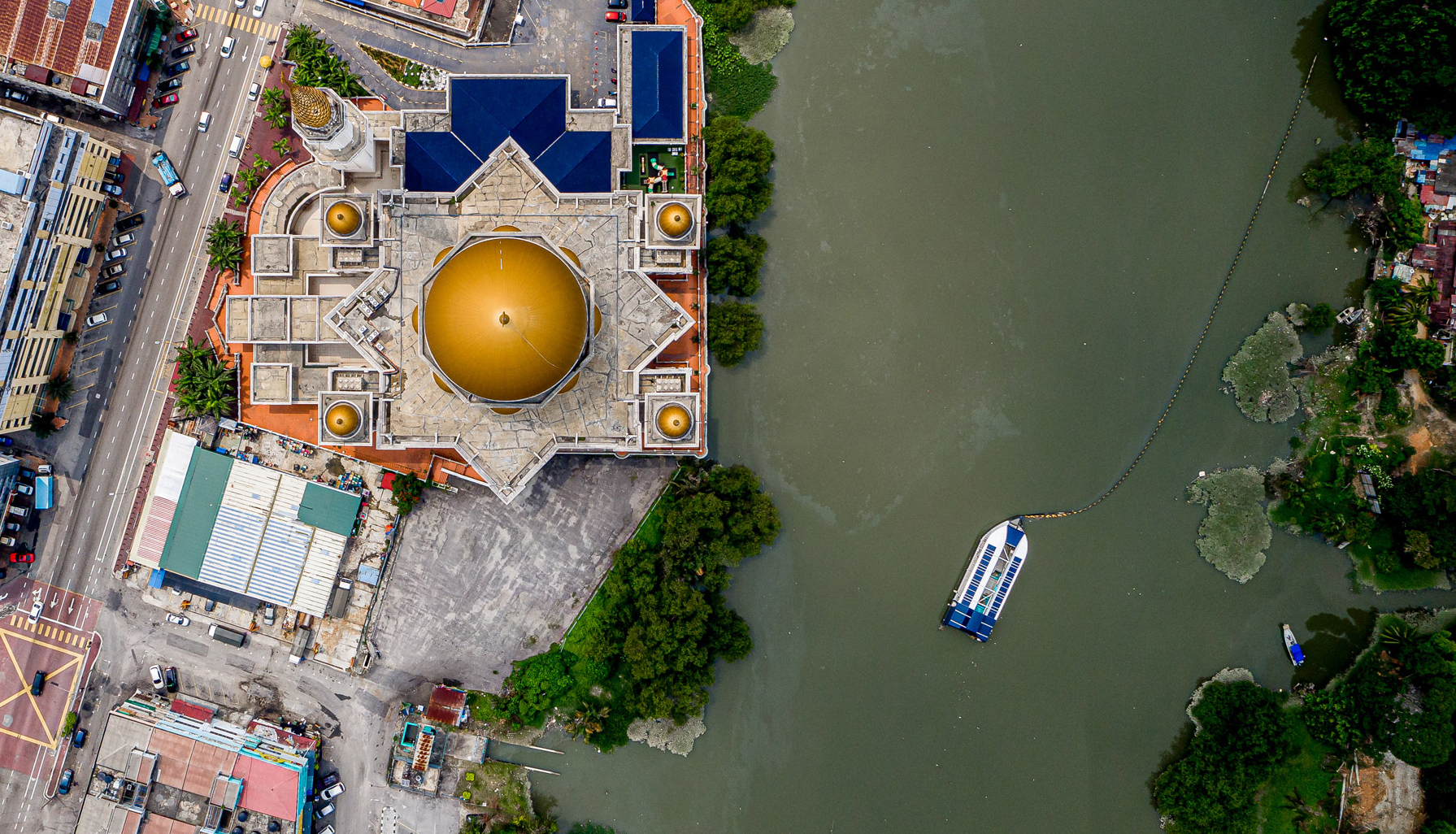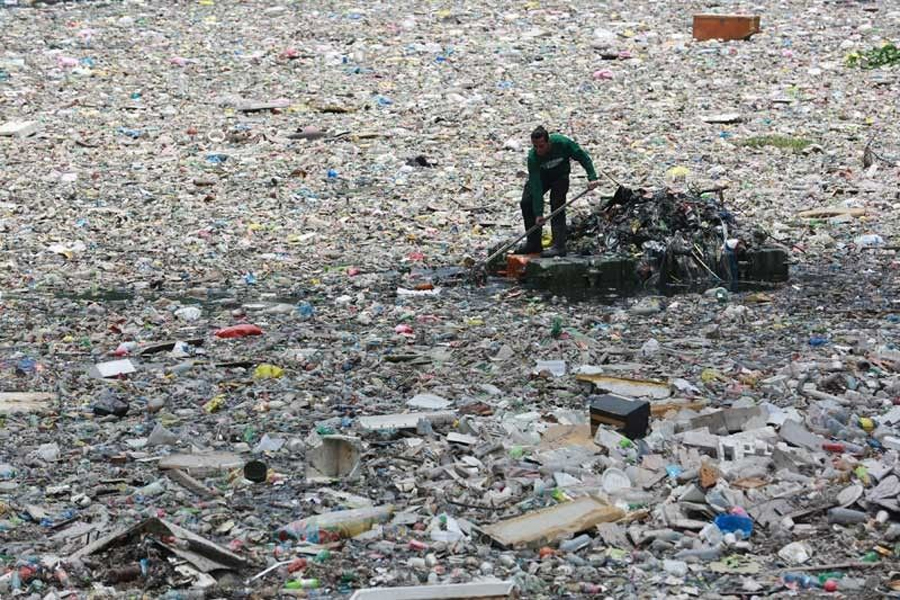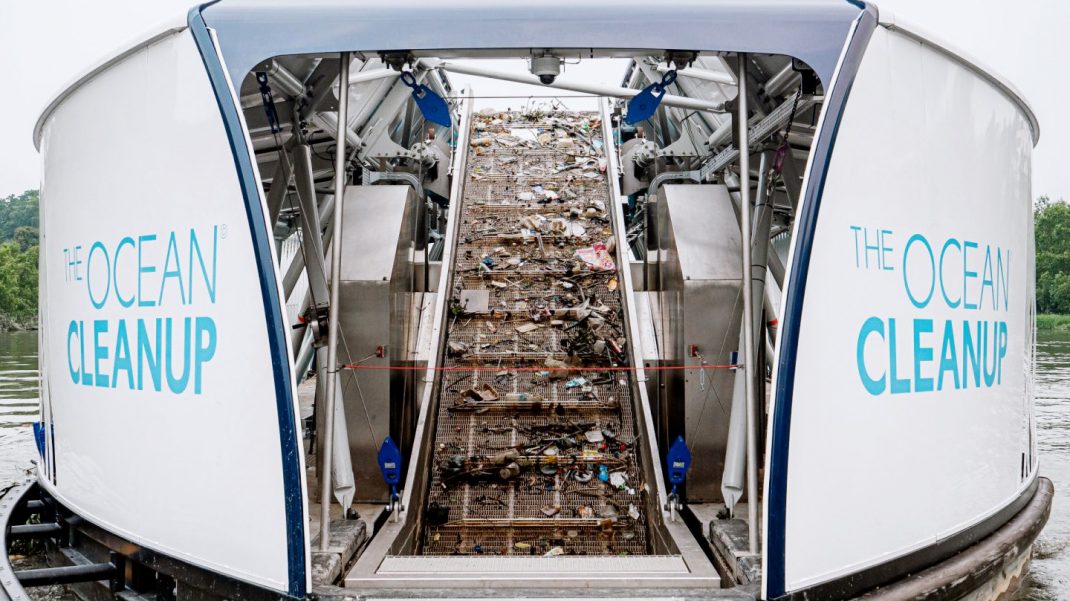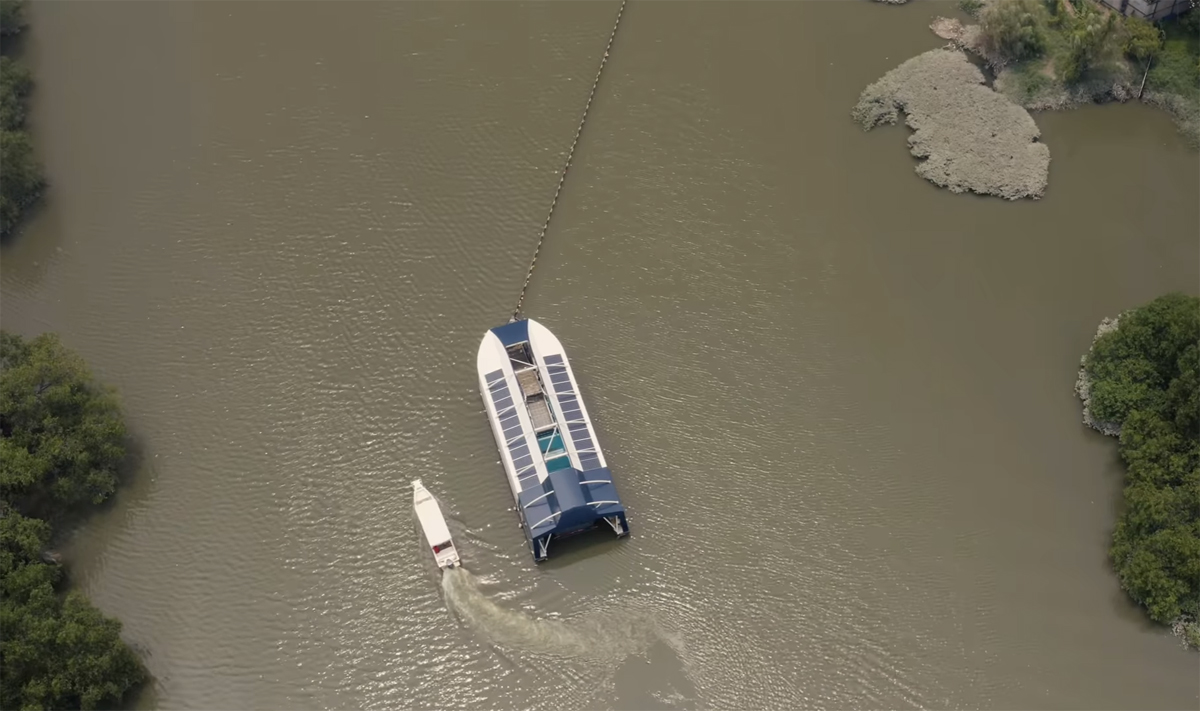
On the Klang River, in Malaysia
A year ago, we talked about a global project to clean the world's oceans. The Ocean Cleanup Foundation was founded by a young Dutch boy, and, collecting several million donations, launched several giant stand-alone solar-powered pontoons collecting plastic floating near the surface of the water. The project had a lot of critics, mostly saying that even such a system could not be cleaned. Especially if every year several new millions of tons of garbage arrive at it.
Now Boyan Slat, a young inventor and head of the fund, will deal with the elimination of this problem. Ocean Cleanup teams up with government agencies, non-profit foundations, and city mayors to clean up the most polluted rivers in the metropolis. To do this, the other day in the Netherlands was presented their new autonomous unit - The Interceptor.

The path of the “global cleaner” at Boyan Slat began in 2012. Then at the TEDx conference, he first proposed the construction of a number of autonomous structures that would allow the oceans to gradually clean themselves, year after year. And a person would only have to periodically drive up and pick up the collected garbage for recycling. After this performance, Slat dropped out and founded Ocean Cleanup. He collected the first $ 90 thousand to start the project through crowdfunding, another $ 100 thousand brought a grant from Peter Thiel, the founder of PayPal. In 2013, at the age of 18, Slat began to prepare for the implementation of his idea.
After 2 years, a team of volunteers, including about a hundred engineers and oceanographers, prepared a report on plastic in the ocean for the foundation. Ocean Cleanup launched the second fundraising campaign, which raised $ 2.2 million. As a result, Boyan Slat and a thousand volunteers built a floating system for $ 25 million. From the initial design in the form of a huge ramp, presented at TEDx in 2012, almost nothing not left. The system has become much simpler - solar panels, sensors and GPS on pontoons assembled in the form of a large arc. Under the pontoons is a long “skirt” collecting plastic, under which fish and other sea creatures can freely move.

System 001, code-named "Wilson" was launched into the ocean at the end of 2018, in the area of the Great Pacific garbage spot. Since then, she had to face a series of troubles. Abandoned fishing nets fell into it, some garbage returned to the ocean, and in January-2019 a breakthrough was discovered, and it had to be towed to Hawaii for repairs. Now, the upgraded System 001 / B is working on the water, which has been actively collecting plastic for several months already, up to particles with a size of 1 millimeter. This plastic is sent to a recycling station or burned to generate electricity.

But the main problem remained - new garbage constantly comes from the rivers. In a much larger volume than Ocean Cleanup can yet clean. Until it is decided to make the oceans cleaner and allow our hydrosphere to breathe freely, one does not even have to dream. Everything, from zooplankton and further down the chain to fish and people, is gradually, year after year, poisoned by microplastic particles.

Philippines, Manilla (yes, this is a river)
Ocean Cleanup, together with oceanologists, studied more than 40,000 rivers and found that only 20 rivers brought most of the plastic waste into the ocean. Almost all of them are located in Southeast Asia. They also learned that about 80% of garbage falls on the thousand most polluted rivers in the world (less than 1% of the total). If you remove the garbage from these rivers, cleaning the ocean becomes a very realistic task.

So now they are clearing the Klang River in Malaysia. It costs the government $ 1.4 million per year
Here is their interactive map of the world's dirtiest rivers. Most are small and fairly narrow waterways passing through urban areas. Ideal for collecting garbage in them (not to mention the fact that it is much closer to delivering it for processing later than from the Pacific Ocean, where there are thousands of kilometers to the nearest plant).
It is in these rivers that they plan to launch a new unit - The Interceptor.




The 25-year-old Dutchman presented his invention at a forum in Rotterdam. Interceptor (“Interceptor") - a huge catamaran 24 meters long and 8 meters wide, in which a conveyor belt filters the water, catching garbage and distributing it into floating containers. After filling them, the operator on the ground receives a signal, sends the boat, and the plastic is taken for recycling. The system is capable of collecting 50-110 tons of garbage per day.

The device is powered by a solar battery and has built-in lithium-ion batteries, so it can work day and night without noise and exhaust gases. During garbage collection, the system covers only half of the river (and only the upper layer), which means that it does not become an obstacle for other vessels and wildlife. The device is designed for 20 years of service, designed so as not to roll over even in the event of a sharp flood or large waves. He is also not afraid of heavy large objects (the device has a “nose” that pushes them out of the way).

The cost of building one "Interceptor" is 700 thousand euros. Also, several thousand euros every month is required for maintenance. But part of the cost is covered by the sale of assembled plastic. One ton of PET costs up to 500 euros (in third world countries, where most of the collection will now take place - about 200 euros). If you start the mass production of such “interceptors” and conclude good contracts for the processing of waste, over time it can even turn into a profitable business. Although Ocean Cleanup is a non-profit fund, it does not think about profit yet.

Boyan Slat says in an interview with New Atlas:
To truly rid the oceans of plastic, we need to clear the current “garbage legacy” and stop littering. Now there are solutions for both sides of the equation.
Interceptor is designed so that it can be placed on almost any river. But he has the ability to adapt to the situation. For example, many of the rivers Slat talks about in the presentation have a bottleneck where all the rubbish is nailed, carrying in a continuous stream. There, the conveyor belt just sits and receives garbage that floats in the direction of the vessel. On other rivers, a thin floating barrier is used that closes the waste road along the surface of the water and directs them to the inlet in the catamaran. And sometimes, if the current is weak, the Interceptor goes swimming, collecting all the garbage that he finds along the way.

The first test interceptor is installed in Jakarta, Indonesia. The second, already full-blown, is working on the Klang River, in Malaysia, one of the dirtiest on the planet. You can watch a video of its assembly and start of work here . A third will soon appear in the Mekong Delta in Vietnam. And the fourth (which stood on the stage in Rotterdam with Slat) will go to the Dominican Republic, to Santo Domingo.
Thailand has already signed an agreement to locate a treatment vessel near Bangkok. Negotiations are also underway to install the Interceptor in Los Angeles.
Boyan Slat intends to work together with government leaders, foundations and private organizations to install treatment facilities on the thousand most polluted rivers in the world over the next five years.
PS Pochtoy.com can deliver any purchases from US stores. Shipping cost 0.5 kg - $ 12. Now comes to your city in 4-8 days (we have accelerated!). For readers of our blog - a free ransom from American stores after registering for the HABR code. Just give our operators a link and fund your account, we will do the rest.
